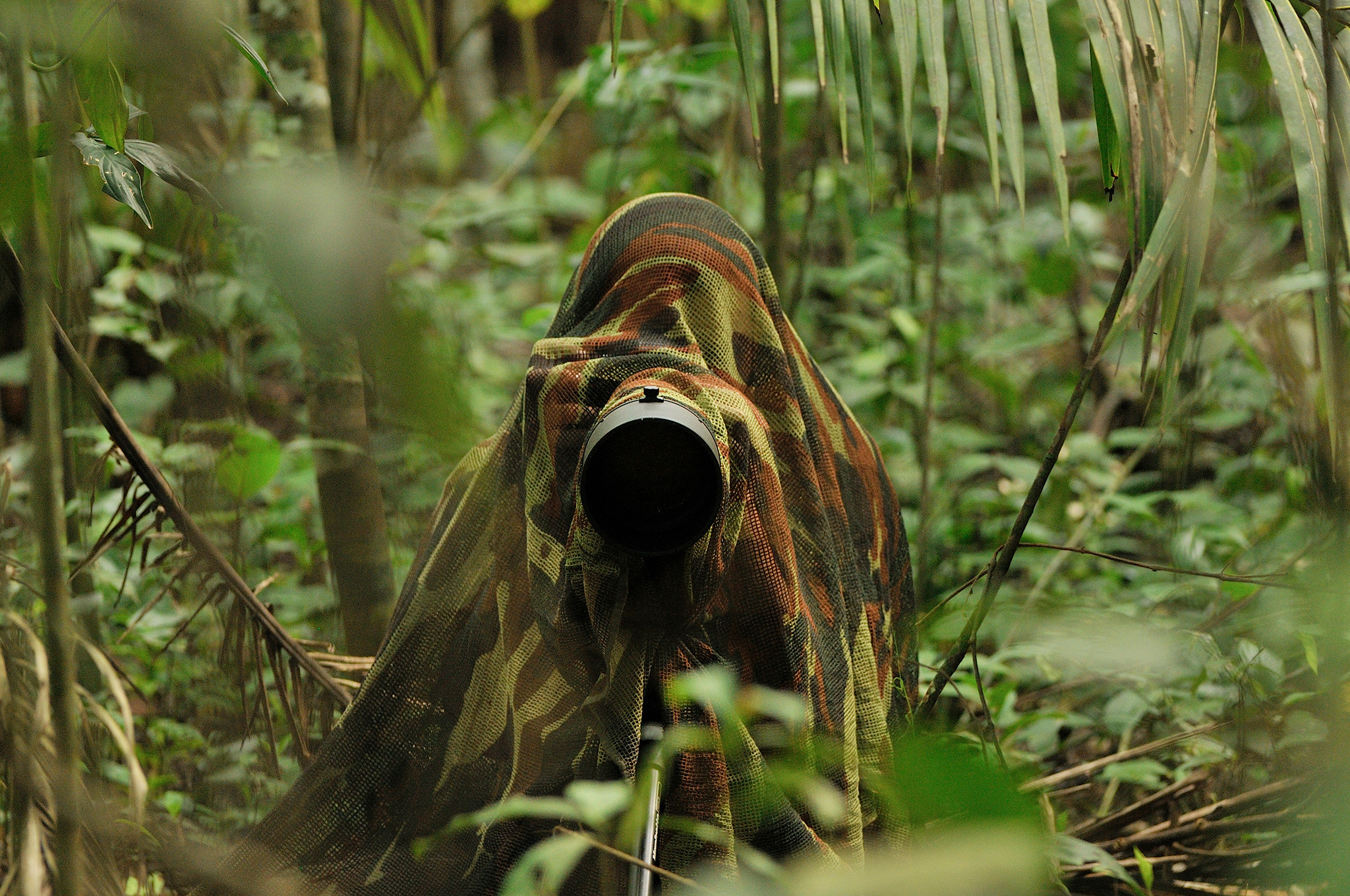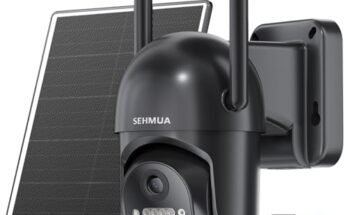Have you ever paused on a hike, heart racing, as a deer stepped silently into view—or watched a bird take flight just as the golden light hit its wings? Those moments are magic. And with a camera in your hands, you have the power to capture them forever.
Wildlife photography isn’t just about clicking a button—it’s about connecting with nature, telling powerful stories, and freezing those once-in-a-lifetime encounters in time. You might think stunning wildlife shots are reserved for pros with pricey gear, but the truth is, you don’t need a massive lens or a decade of experience to get started.
With the right mindset, some practical tips, and a bit of patience, you can take incredible wildlife photos that not only wow your friends and family—but remind you of the wonder you felt in that moment. Ready to turn your next outdoor adventure into something unforgettable? Let’s explore how you can bring the wild to life through your lens.

Choosing The Right Equipment
Capturing wildlife requires the right camera equipment for stunning shots. Choose a DSLR or mirrorless camera for versatility. Telephoto lenses help you zoom in without disturbing the animals.
Choosing the right equipment makes a big difference in wildlife photography. Good gear captures the beauty and detail of animals. It helps you take clear, vibrant photos. Wildlife photography requires specific tools to get great shots. Let’s explore the essentials.
Camera Options
A DSLR camera is a popular choice. It offers versatility and quality. Mirrorless cameras provide lightweight options. They are easier to carry during long hikes. Both options offer fast autofocus, essential for moving subjects. Choose a camera with a high frame rate. This ensures you capture the perfect moment.
Lenses For Wildlife Photography
Lenses are critical for wildlife photography. A telephoto lens helps capture distant subjects. Look for lenses with a focal length of at least 300mm. They bring animals closer without disturbing them. Zoom lenses offer flexibility. They let you adjust the frame without changing lenses. Prime lenses provide sharp images and wider apertures. They work well in low light.
Essential Accessories
A sturdy tripod stabilizes your camera. It ensures clear shots. A tripod is vital for long-distance and low-light photography. Lens hoods reduce glare from the sun. They improve image contrast. A camera bag protects your gear. Look for waterproof options for outdoor shoots. Spare batteries and memory cards are must-haves. Wildlife moments can be unpredictable. Be ready to capture them all.
Understanding Animal Behavior
Capturing stunning images of wildlife isn’t just about having the right camera gear. It’s about understanding animal behavior. Knowing how animals act and react can transform your wildlife photography from average to extraordinary. Imagine being able to predict when a bird will take flight or when a deer will pause for a perfect shot. That’s the magic of understanding animal behavior, and it starts with a little research, perfect timing, and a lot of respect.
Researching Species
Before heading out, spend some time learning about the animals you hope to photograph. Each species has unique traits and habits. Take birds, for example. Some species are more active at dawn, while others prefer dusk. By understanding these patterns, you can better plan your shoot.
Look into their feeding habits and preferred habitats. Knowing where an animal is likely to be and what it might be doing can be the difference between a missed opportunity and a perfect shot. Have you ever waited for hours in the wrong spot, only to realize that a slight change in location could have made all the difference?
Timing Your Shoot
Timing is everything in wildlife photography. Animals are most active during certain times of the day. Early mornings and late afternoons are often the best times to catch wildlife in action. But it’s not just about the clock. Consider the seasons and weather conditions too.
For example, winter might be the perfect time to photograph foxes against a snowy backdrop. Spring brings out birds in full song and vibrant plumage. Timing also includes being ready when an unexpected moment occurs. Are you prepared to capture the sudden leap of a deer or the rare appearance of a shy lynx?
Respecting Wildlife
Respecting wildlife is crucial for both ethical reasons and better photography. Animals shouldn’t feel threatened or stressed by your presence. Maintain a safe distance and avoid intruding on their natural habitat. Not only does this ensure their safety, but it also helps you capture genuine, undisturbed behavior.
Consider using longer lenses to keep your distance while getting close-up shots. If you move too quickly or make loud noises, you might scare them away. How would you feel if someone invaded your space without warning? Respect builds trust and can lead to more natural, engaging photographs.
Understanding animal behavior is the cornerstone of successful wildlife photography. What steps will you take to deepen your understanding and improve your skills?
Mastering Composition Techniques
Mastering composition techniques in wildlife photography brings your images to life. These techniques help you capture the beauty of animals in their natural habitat. With the right composition, your photos tell a story and evoke emotions. Let’s explore some key techniques to enhance your wildlife photography skills.
Framing Your Subject
Framing guides the viewer’s eye to the subject. Use natural elements like trees or branches. They create a natural border around the animal. This technique adds focus and context to your shot. It also highlights the animal against the backdrop.
Using Natural Light
Natural light can make or break a photograph. The golden hours, just after sunrise or before sunset, offer the best light. Soft, warm light enhances colors and textures. Avoid harsh midday sun, which casts unwanted shadows. Clouds can diffuse the light, creating a soft, even illumination.
Creating Depth And Interest
Depth makes your photos more dynamic. To achieve this, include elements in the foreground, middle ground, and background. This layering effect draws the viewer into the scene. It makes them feel like they’re part of the moment. Look for opportunities to capture animals interacting with their environment.

Capturing Motion And Action
Capturing wildlife in motion requires patience and practice. Focus on the animal’s behavior to anticipate movement. Use a fast shutter speed to freeze action and ensure sharp images.
Capturing motion and action in wildlife photography can be incredibly rewarding. Imagine freezing the moment a hawk dives for its prey or capturing the graceful stride of a deer in mid-leap. These dynamic scenes are what make wildlife photography thrilling. But how do you effectively capture such moments? Here are some tips to help you enhance your skills in this area.
Freezing Motion
To freeze motion, adjust your camera settings to a fast shutter speed. This technique is ideal for capturing the instant when a bird spreads its wings or a cheetah races across the savannah. Experiment with different speeds, starting at 1/1000 of a second. You’ll quickly notice the impact of speed on the sharpness of your images. Consider lighting conditions. Bright daylight enables faster shutter speeds, making it easier to capture crisp images without blurring.
Panning For Dynamic Shots
Panning involves moving your camera along with the subject’s motion, resulting in a dynamic, blurred background while the subject remains in focus. This technique is perfect for photographing running animals or birds in flight. Practice this technique by tracking a moving subject with your camera. Start with slower-moving animals to get the hang of it. Keep your movements smooth and steady. A tripod can help achieve better results, reducing camera shake for clearer shots.
Using Burst Mode
Burst mode is your best friend when capturing unpredictable wildlife actions. It allows you to take multiple shots in quick succession, increasing your chances of capturing the perfect moment. Set your camera to burst mode when you anticipate rapid movement, such as a fish jumping out of water or a squirrel leaping between branches. Review your shots immediately to identify which images capture the peak of action, ensuring you don’t miss that extraordinary shot. Capturing motion and action in wildlife photography requires patience and practice. Have you ever spent hours waiting for the perfect moment, only to miss it by a split second? Enhance your skills by mastering these techniques, and your images will tell stories of the wild that captivate the imagination.
Perfecting Focus And Sharpness
Capturing wildlife in sharp focus can be challenging. Animals move unpredictably. Lighting conditions change quickly. Achieving a crisp image requires patience and skill. Mastering focus and sharpness is essential. It makes your wildlife photos stand out. Let’s explore how to perfect your focus and sharpness.
Selecting Focus Modes
Choosing the right focus mode is crucial. Cameras offer different focus modes. Single autofocus (AF-S) works well for still animals. Continuous autofocus (AF-C) helps with moving subjects. Use manual focus for more control. Experiment with modes. Find what works best for you.
Achieving Sharp Images
Sharp images capture details. Use a fast shutter speed. It freezes motion. Select a smaller aperture for depth. Increase ISO for darker environments. Keep your lens clean. Dust affects clarity. Practice adjusting these settings. Get the sharpest images possible.
Avoiding Camera Shake
Camera shake blurs photos. Use a tripod for stability. It reduces movement. Press the shutter gently. Avoid jarring the camera. Use a remote shutter release. It prevents touch-induced shake. Hold your breath while shooting. It minimizes body movement. Practice these techniques. Capture clear, sharp wildlife photos.

Exploring Different Environments
Exploring different environments offers unique challenges and rewards for wildlife photographers. Each setting has distinct characteristics that influence your approach. Understanding these nuances helps capture stunning images of animals in their natural habitats.
Shooting In Forests
Forests are rich with wildlife. Their dense foliage can create beautiful, dramatic light. Early morning or late afternoon is ideal for soft lighting. Use a fast lens to capture animals in action. Pay attention to sounds; they often signal nearby creatures. Stay quiet and patient to avoid startling them. Focus on the animal’s eyes to create compelling portraits.
Photographing Aquatic Life
Water environments host diverse life forms. Clear days offer the best visibility for underwater shots. Use polarized filters to reduce glare. Consider a waterproof camera for submerged photography. Capture movement; fish and other aquatic life rarely stay still. Dive slowly to prevent disturbing the habitat. Surface reflections can add an artistic touch to your images.
Capturing Wildlife In Open Landscapes
Open landscapes provide expansive views. Use wide-angle lenses to emphasize vastness. Focus on the composition; balance the subject with the environment. Animals may be distant, so a telephoto lens is useful. Pay attention to weather patterns; they affect lighting and animal behavior. Sunrise and sunset often yield breathtaking colors. Be aware of your surroundings; animals can appear unexpectedly.
Editing And Post-processing
Capturing wildlife demands patience and skill. Editing and post-processing enhance images by adjusting colors and sharpness. These techniques help reveal the beauty and detail of animal subjects.
Editing and post-processing play a vital role in wildlife photography. Capturing a great shot is just the first step. Enhancing it makes the picture truly stand out. Let’s explore how to refine your wildlife photos with editing techniques.
Enhancing Colors
Editing software helps adjust colors to make them more vibrant. Increase saturation to make colors pop. Adjust hue for a more realistic look. Use tools to balance colors. This creates a natural feel. Be careful not to overdo it. Too much can make the picture look artificial. Aim for a balance that enhances your photo.
Correcting Exposure
Sometimes, the lighting isn’t perfect when shooting wildlife. Editing tools can correct exposure issues. Use brightness settings to lighten dark areas. Adjust contrast for more depth. Shadows and highlights can be modified. This brings out hidden details. A well-exposed photo looks professional and engaging.
Adding Final Touches
Final touches give your photo that polished look. Crop to focus on the subject. Remove distractions from the background. Use sharpening tools for clearer images. Adjusting white balance ensures accurate colors. Add a subtle vignette for a dramatic effect. These tweaks can enhance the overall composition. They make your wildlife images memorable.
Ethical Wildlife Photography
Capturing wildlife ethically involves patience and respect for animals’ natural habitats. Use quiet movements to avoid disturbing them. Always keep a safe distance, allowing creatures to act naturally.
Capturing the beauty of wildlife through photography can be a deeply rewarding experience. Yet, as photographers, it’s crucial to prioritize the well-being of the animals we aim to showcase. Ethical wildlife photography isn’t just about snapping the perfect picture; it’s about respecting the creatures and their habitats. How do you balance your passion for photography with the responsibility towards wildlife? Let’s explore some practical ways you can achieve this balance.
Minimizing Disturbance
One of the core principles of ethical wildlife photography is minimizing disturbance. Whenever you approach an animal, keep a respectful distance. Use a telephoto lens to capture close-up shots without invading their space. Remain quiet and avoid sudden movements that could startle the wildlife. Remember, every creature has its own rhythm and routine. Disturbing them can have unintended consequences, such as preventing them from feeding or causing stress. Before you head out, research the species you plan to photograph. Understand their behavior and habitat needs. This knowledge can guide you in determining how close is too close, ensuring you don’t disrupt their natural activities.
Promoting Conservation
Photography is a powerful tool to raise awareness about conservation. The images you capture can tell stories that inspire others to care about wildlife. Use your photos to highlight the beauty and importance of preserving natural habitats. Consider partnering with conservation organizations. Share your work with groups that align with your values. This can amplify your impact and help spread vital messages about protecting wildlife. By actively promoting conservation through your photography, you contribute to the larger effort of preserving our planet’s biodiversity. Your camera becomes a voice for those who cannot speak for themselves.
Sharing Responsibly
In the digital age, sharing photos is easier than ever. But with this ease comes responsibility. When you post images online, be mindful of the information you provide. Avoid sharing specific locations of rare or endangered species, as this can lead to increased human traffic and potential harm. Engage your audience with stories behind your photos. Explain the importance of ethical practices and how they can make a difference. Encourage others to appreciate wildlife without disturbing it. Think about the message your images convey. Are they fostering a connection with nature? Are they encouraging others to respect and protect wildlife? Your voice can shape how others view and interact with the natural world.
Frequently Asked Questions
What Equipment Is Best For Wildlife Photography?
For wildlife photography, use a DSLR or mirrorless camera with a telephoto lens. A lens with at least 300mm is ideal for capturing distant wildlife. A tripod helps stabilize shots, especially in low light. Consider using a fast memory card for quick shooting and a backpack for easy transport.
How Can I Approach Animals Safely?
Approach animals slowly and quietly to avoid startling them. Keep a safe distance to ensure your safety and theirs. Use a telephoto lens to capture close-up images without intrusion. Always respect wildlife and follow local guidelines to ensure their natural behavior is not disrupted.
What Time Of Day Is Best For Wildlife Photography?
Early morning and late afternoon are ideal for wildlife photography. During these times, animals are more active, and the light is softer. This natural light enhances colors and reduces harsh shadows. Plan your shoots around these times for the best results.
How Do I Capture Sharp Wildlife Images?
To capture sharp images, use a fast shutter speed to freeze motion. A speed of at least 1/1000s is recommended for active animals. Use a tripod or monopod for stability. Focus on the animal’s eyes for more engaging photos. Practice and patience are essential for sharp wildlife images.
Conclusion
Capturing wildlife photos can be an exciting adventure. With patience and practice, you can improve your skills. Remember to respect animals and their habitats. Use the right equipment for better results. Pay attention to lighting and composition. Move slowly and quietly to avoid startling wildlife.
Explore different angles and perspectives. Learn from each experience. Try to capture the essence of nature. Share your photos and inspire others. Enjoy the beauty of the wild. Keep exploring, and your wildlife photography will surely grow. Stay curious, and keep clicking!



